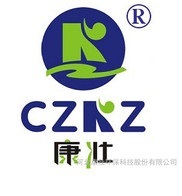
 One year of qualification
One year of qualification
 Audited Supplier
Audited Supplier
In This Store
Category:Fine Chemicals > Other Fine Chemicals
Product Name:1,3-Dimethyl-2-imidazolidinone
CAS No.:80-73-9
Standard:In-house Standards
Price(USD):US$11200/MT
Company:Hebei Kangzhuang Environmental Protection Technology Co., Ltd
Grade: Industrial Grade
Factory Location: No.10 Sun Simiao Road, Lingang Economic and Technological Development Zone, Cangzhou City, Hebei Province, China
Main Sales Markets: North America,Central/South America,Western Europe,Eastern Europe,Australasia,Asia,Middle East,Africa
Delivery Lead Time: 1 week
Sample Provided: yes
Payment Terms: T/T
1,3-dimethyl-2-imidazolinone DMI
Common name: 1,3-dimethyl-2-imidazolinone; N. N '- Dimethyl-2-imidazolinone; 1,3-dimethylimidazolinone
English name: N, N '- Dimethylethyleneurea; 1,3-Dimethyl-2-Imidazolidinone; DMEU; DMI
Molecular formula: C5H10N2O
Molecular weight: 114.15
CAS: 80-73-9
Quality indicators: content ≥ 99.0, ≥ 99.5%
Product Description
1,3-dimethyl-2-imidazolinone (DMI CAS: 80-73-9) is a colorless, transparent, low viscosity liquid with a unique odor of fatty amines. The viscosity (25 ℃) is 1.944 cps. DMI can be mixed with organic solvents such as water, ethanol, ether, acetone, chloroform, but it is insoluble in petroleum ether, cyclohexane, etc. Strong polarity, excellent solubility, acid and alkaline resistance. Boiling point: 224-226 ° C Melting point: 8.2 ° C Flash point: 120 ° C Refractive index n20/D: 1.4720 Relative density: 1.044.
purpose
1,3-dimethyl-2-imidazolinone, as a non proton strong polar solvent, has special physical and chemical properties and is widely used in fields such as medicine, refining, dyes/pigments, microelectronics, engineering plastics, cleaning and surface treatment.
As a drug transdermal absorbent in the pharmaceutical field, it can promote the mixing of raw materials and catalysts, improve the chemical, thermal, and mechanical properties of polymers in the polymer field; In the field of liquid crystal materials, high-quality porous ultrafiltration membranes can be obtained, which are liquid crystal positioning agents with stable storage performance; As an organic reaction solvent, it promotes intermolecular and intramolecular condensation reactions to prepare macromolecular heterocyclic compounds. In addition, it has been applied effectively in the fields of nucleophilic substitution, reduction, oxidation, elimination, halogen exchange reactions, Kolbe Schmitt reactions, and Ullmann reactions under alkaline conditions.
1. Reaction solvent
Due to its excellent thermal and chemical stability, DMI has the ability to dissolve inorganic, organic compounds, and various resins, as well as its catalytic effect as a non proton transfer polar solvent, making it a particularly effective reaction solvent. Using DMI can improve yield and effectively control side reactions while shortening reaction time.
DMI can effectively promote various nucleophilic substitution reactions, such as the synthesis of phenyl ether derivatives, amino compounds, and fluorobenzene derivatives. Its high dielectric constant and solvation effect on cations can catalyze anionic nucleophilic reactions. These synthetic products are used as intermediates in the synthesis of monomers for agricultural chemicals, pharmaceuticals, dyes, and high-performance resins.
2 Petroleum products
DMI has high boiling point and thermal stability, and is not easily azeotropic with other substances. Therefore, it can be applied in many industrial processes such as liquid-liquid extraction, countercurrent distribution, extraction distillation, and countercurrent washing. Due to its ability to dissolve aromatic compounds and unsaturated hydrocarbons, but not chain alkanes, DMI is a good extractant for BTX (benzene, toluene, and xylene).
3 Polymer reaction solvents
DMI is a solvent suitable for the production process of heat-resistant thermoplastic plastics. It can also be effectively used as a solvent for various polymer synthesis processes, and as a clearing agent for polymerization reactions and plastic molding processes. In the production of polyamide and polyimide resins, DMI can accelerate the formation of amide and imine groups, resulting in high molecular weight polymers. The resulting solution is suitable for solution spinning to obtain high-temperature resistant polyimide fibers.
In the production of polyphenylene sulfide resin (PPS), DMI can be used to obtain electronic materials with very low organic impurity content. In the production of polyphenylene ether sulfone resin, DMI can effectively control the occurrence of side reactions and obtain high-quality polymer products. DMI treatment can make the film more uniform during the film-forming process of polyimide resin and polysulfone resin, as well as the stretching process of polyether ketone resin films.
4. Lithography process stripping agent
Due to its low viscosity and high dielectric constant, DMI can be used as an electrolyte solvent for high-performance lithium batteries. In addition, it has strong penetration ability, high boiling point, and high temperature resistance, and can also be used as a stripping agent for silicon chip photoresist. Its fast peeling and non corrosive properties can greatly simplify the peeling process and accelerate chip production speed.
5 detergents
Adding DMI to a mixture of surfactants, bases, alcohols, and polyoxyethylene alkyl ethers can yield a powerful detergent. Due to its ability to easily dissolve dirt, DMI can also be used to prepare an efficient cleaning solution for cleaning glass and metals.
6 Dyes and pigments
Ink made by mixing DMI with dyes and pigments as a solvent can produce sharp contrast and clear images.
7 Surface treatment agents
DMI can be used as a surface treatment agent to improve the bonding strength between materials such as ABS, polyimide, PPS, polytetrafluoroethylene, and epoxy resin adhesives.
8 DMI and NMP (N-methylpyrrolidone)
DMI and NMP have similar structures, performance, and application areas, but there are significant differences in certain performance aspects between the two:
A. Toxicity
Although NMP is a low volatility and low toxicity solvent, the latest research has found that NMP has potential reproductive toxicity. Some regions in the United States and Europe have restricted its use, such as coatings, graffiti cleaning agents, pesticides, and other substances that may be heavily exposed to NMP vapors by the human body. All uses of NMP are prohibited. More stringent restrictive measures may be taken in the future. There are currently no relevant toxicity reports on DMI, as it can widely replace the strong carcinogenic solvent HMPA (Hexamethylphophoramide).
B. Hydrolysis resistance
Both NMP and DMI belong to the class of lactam compounds. Due to the ease of hydrolysis of amide bonds, the usage conditions of amide solvents are limited. For example, DMF decomposes into dimethylamine and carbon monoxide at high temperatures (350 ℃), and a small amount of decomposition occurs at room temperature; In the presence of strong alkalis (such as KOH, NaOH, AcONa), it rapidly decomposes at room temperature without water, and may explode at high temperatures. NMP is much more stable than DMF, but it is also prone to decomposition under alkaline conditions (4% sodium hydroxide decomposes approximately 50-70% after 8 hours), and is stable under acidic conditions. DMI, due to the conjugation effect of urea structure, reduces the dipole and lowers the carbonyl reaction activity. On the other hand, the five atoms on the ring are coplanar, reducing the chances of nucleophilic reagents entering the ring to attack carbonyl groups. So DMI is quite stable under high temperature alkaline conditions and does not undergo rapid decomposition. Compared to NMP, the application range of DMI has been expanded and can be applied to reactions under alkaline conditions.
C. Organic reactions
The pKa of the acid corresponding to the N atom on DMI is larger than that on NMP, which means that DMI is more suitable as a nucleophilic substitution reaction solvent. At the same time, DMI has a higher boiling point and stability, making it suitable for fields that require solvent evaporation prevention. At the same time, DMI has better solubility, and both inorganic, organic, and polymer substances can form a solution, making the reaction system uniform and promoting the reaction to proceed fully and quickly. Especially DMI as a solvent can accelerate the reaction rate and yield of a large amount of metal salts (LiCl, CuI, etc.) as catalysts.
packing
200kg iron drum packaging.
store
Keep away from sparks and heat sources, seal and store in a cool, dry environment.

Contact Us
Tel: (+86) 400 610 1188
WhatsApp/Telegram/Wechat: +86 13621645194
+86 15021993094
Follow Us:




 Pharma Sources Insight July 2025
Pharma Sources Insight July 2025


